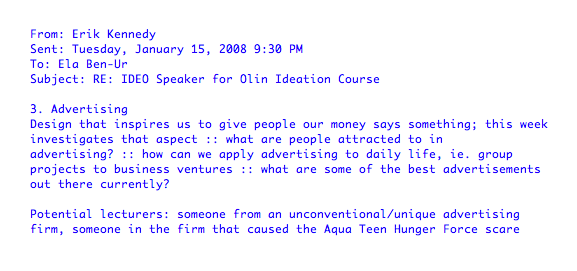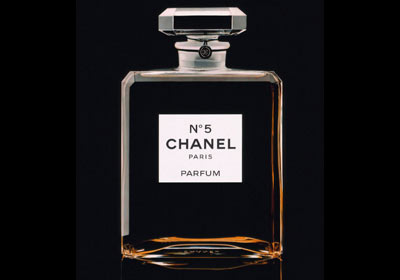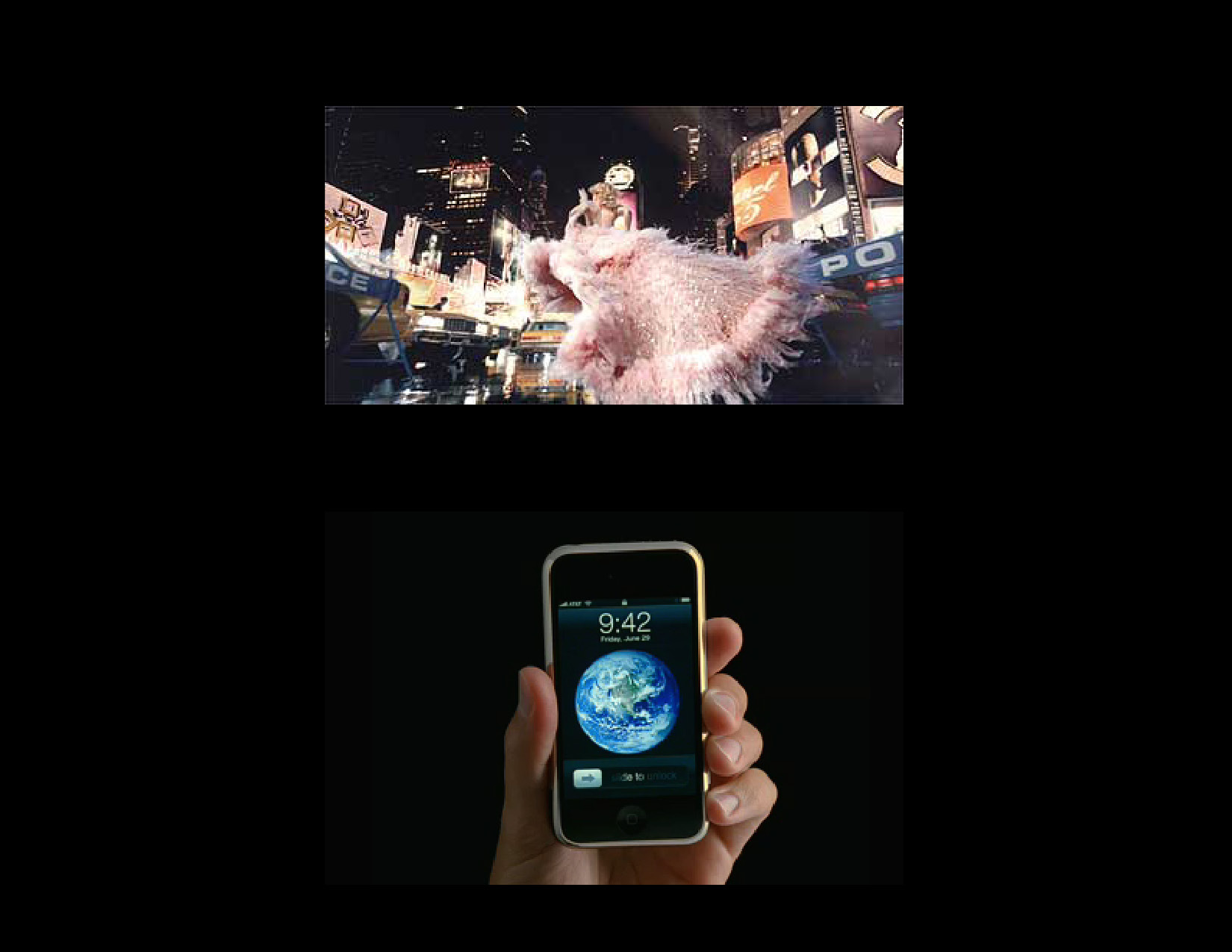Ian Dapot
Chanel vs. iPhone
Olin College of Engineering, 2009
Course Lecture: Ideation

From those examples I began creating a kind of spectrum, a range of concrete and abstract product experiences. I'd like to place advertisements for Chanel Number 5, originally introduced in May 1921. The difficulty of advertising something as ethereal as a perfume, or depicting scent in a photograph present some pretty serious and somewhat obvious challenges. The images in the advertisements can't show you the product, in the way an ad for a teapot or a wrist watch could. While the distinctive qualities of the Chanel logo and bottle as well as the reputation of the House of Chanel are powerful assets on which to build an advertising campaign in the end we are left with at best an abstraction about what it might be like to experience the scent of Chanel Number 5 first hand. (I am willing to concede that there are magazine advertisements that include perfume samples, and that those are concrete representations of the scents but those samples are an exception not the rule.) That said, because the ads cannot directly relate to the viewer the properties of the perfume they instead suggest a fantasy, which we are encouraged to engage in, to imagine what it might be like to wear Chanel Number 5 for ourselves. And the more desirable the images contained in the advertisement the more powerful the fantasy.

To this end Chanel has enlisted the services of models such as Catherine Deneuve, Carole Bouquet, Estella Warren, Marilyn Monroe, who when asked what she wore to bed said "two drops of Chanel Number 5", and Nicole Kidman. With the Kidman appearing in Chanel Number 5 the Film a 3 minute commercial directed by Baz Luhrmann, director of Moulin Rouge, Strictly Ballroom, and Romeo and Juliet, one of the most expensive ads ever shot. It has arguably been a successful strategy. Chanel Number 5 is undeniably an icon of perfume and is a cultural icon as well, with the bottle included in the collection of the Museum of Modern Art as well as the subject of a series of silkscreens by Andy Warhol.

At the other end of the spectrum I would like to consider the latest ads for the iPhone from Apple computer by TBWA/Chiat/Day. In contrast to Chanel, the ads for the iPhone focus on the product exclusively or I suppose on the product, and it's interface. The abstraction is minimal, we see hands operating the various phone functions. That's it. It's concrete, it is product driven advertising.
What we don't see is famous people using the phone, or alternatively people like me using the phone, there is no scenario or story, and we are not asked to imagine what it might be like to have have an iPhone. The spoken language of the ads does indirectly suggest a comparison between the iPhone and other multi-media phone alternatives, but we are supposed to see how the iPhone works, and think that it would be nice to have a phone that worked that way. But it isn't a kind of Road & Track comparison of the ten fastest phones available.
There is also evidence of the integrated services and software that Apple has come to represent, iTunes, Safari, Mail, as well as third party services but we are introduced to them through the depicted use of the iPhone itself. And I think it would be safe to say that the iPhone has been a success, selling 1.4 million units in 2007 with the goal of selling 10 million in 2008.

The point of the examples is to consider the way that things are sold, and the ideas that help to sell them. On one extreme we have a very sophisticated but fairly simple product, which requires an elaborate world of imagination and suggestion in order to be sold.
On the other extreme we have a highly complex product which incorporates a variety of activities, technologies and services in addition to being itself a designed artifact, and is sold through a simple demonstration.
It may not be a fair comparison, or even a reasonable one. But I think it is interesting to think of the advertisements as examinations and embodiments of the products themselves, working with their properties and limitations. I think that these two campaigns stand out in this respect.
In an interesting way the advertisements for the simple product are all idea, and the ads for the complex product have no idea. That's not intended to belittle either effort or product, but rather to point out their respective strategies in relation to ideation.
What the two campaigns share is a lack of product detail, especially technical ones, there are no chemical formulas for perfume or storage capacity numbers for the phone. In a way those kinds of details which can make the product a success or a failure would cloud the issue, a trap that many ads fall into.
And maybe all this means is that not only do you need good ideas to sell good products, but that you have to consider the appropriateness of a given technique to the product at hand, creating smart combinations of what and how.